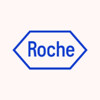
An Exploratory Study to Evaluate the Safety of Brimonidine Intravitreal Implant in Patients With...
Retinitis PigmentosaThis exploratory, 12-month, ascending-dose study will evaluate the safety and effects on visual function of a single injection of Brimonidine intravitreal implant in one eye of patients with Retinitis Pigmentosa.

Trial of Subretinal Injection of (rAAV2-VMD2-hMERTK)
Retinal DiseaseRetinitis PigmentosaThis study was to assess the safety of gene transfer via subretinal administration of rAAV2-VMD2-hMERTK in subjects with MERTK-associated retinitis pigmentosa (RP).

Investigating the Effect of Vitamin A Supplementation on Retinitis Pigmentosa
Retinitis PigmentosaRetinitis pigmentosa (RP) is a collective term for a group of inherited retinal dystrophies that are a major cause of irreversible blindness. RP of some type occurs in approximately 1 out of 3500 persons in the United States(1). Gene mutations are responsible for the majority of RP. To date, mutations have been identified in 30 different genes linked to RP(2). The visual prognosis of RP is poor, since the gradual but relentless visual field loss leads eventually to some degree of blindness(3). Although no effective treatment for RP has been identified, participants supplemented with a daily oral dose of 15,000 IU vitamin A palmitate have shown, on average, a slower rate of deterioration of retinal function when the intervention is continued over several years(4). The purpose of this research is to determine whether administration of high oral doses of vitamin A can acutely improve cone photoreceptor function in RP participants as measured by electroretinography (ERG). In this interventional, non-randomized, prospective, pilot study, 5 participants will receive a daily oral dose of 50,000 IU of vitamin A palmitate for 4 weeks, followed by a maintenance dose of 15,000 IU daily for the subsequent 2 weeks. The primary efficacy outcome is a relative percentage change in ERG response amplitude subsequent to vitamin A supplementation. A secondary efficacy outcome is a relative percentage change in implicit time from pre- to post- vitamin A supplementation, with improvement specified as a shorter response implicit time. Other secondary outcomes will be improvements in visual field (Humphery, 10-2; sum of thresholds). Safety outcomes include visual fields, ETDRS visual acuity, intraocular pressure, serum vitamin A level and liver function tests.

A Phase I Study of the Safety of Proleukin (Aldesleukin) in Combination With Ganciclovir and Antiretroviral...
Cytomegalovirus RetinitisHIV InfectionsTo determine the MTD and dose-limiting toxicities of a regimen of therapeutic ganciclovir, antiretroviral therapy, and recombinant interleukin-2 (aldesleukin; Proleukin) as an immune adjuvant in HIV-seropositive patients. To investigate the effect of increasing doses of Proleukin on the time to progression of CMV retinitis in patients being treated with therapeutic ganciclovir and antiretroviral therapy. To evaluate the incidence and level of anti-IL-2 antibody formation to subcutaneously administered Proleukin in this patient population.

The Safety and Effectiveness of Ganciclovir Used Alone or in Combination With Granulocyte-Macrophage...
Cytomegalovirus RetinitisHIV InfectionsAMENDED: To evaluate the effect of sargramostim ( GM-CSF ) on modulating the granulocytopenia associated with concomitant DHPG and AZT therapy ( Phase B ), in terms of time to development of granulocytopenia as defined by an absolute neutrophil count ( ANC ) less than or equal to 750 cells/mm3. Original design: To determine if granulocyte-macrophage colony-stimulating factor ( GM-CSF ) is helpful in preventing the decreased numbers of white blood cells (infection-fighting cells) associated with ganciclovir ( DHPG ) therapy and to determine if GM-CSF can be safely used in AIDS patients with cytomegalovirus ( CMV ) retinitis. AMENDED: In ACTG 004, among 11 AIDS patients with CMV infection receiving DHPG maintenance therapy (5 mg/kg, 5x/week) with stable white blood cells (WBC)/absolute neutrophil counts (ANC) 7 (64 percent) required dose reduction or discontinuation of both antiviral medications due to granulocytopenia when AZT (600 mg/day) was added. A mean nadir ANC of 717 cells/ml was reached at a mean of 5 weeks of concomitant DHPG/AZT therapy in these patients. While recovery of depressed ANC occurred following discontinuation of study medications, progressive CMV infection (most commonly retinitis) occurred in 19 of 40 patients and seemed to be associated with DHPG therapy interruption. Only 3 of 40 patients were able to tolerate the complete 16 week study duration of DHPG/AZT. Pharmacokinetic studies of co-administration of DHPG and AZT revealed no significant drug-drug interactions. The study investigators concluded that the main, treatment limiting toxicity of combination DHPG/AZT therapy is granulocytopenia and that many patients treated on this study developed intercurrent OIs or staphylococcal septicemia. In order to determine whether patients receiving maintenance DHPG therapy with or without GM-CSF can tolerate concomitant AZT therapy, extended maintenance therapy with the assigned study regimen in combination with AZT will be incorporated into this protocol. Original design: CMV infection causes inflammation of the retina and can lead to permanent blindness. Treatment for CMV retinitis with DHPG has been shown to be effective in halting the progression of retinal disease. During DHPG treatment, however, about 30 to 55 percent of patients develop decreased white blood cell counts. GM-CSF, a naturally occurring human hormone, stimulates the body's bone marrow to produce more white blood cells. Studies with GM-CSF in AIDS patients have shown that it can significantly increase depressed white blood cell counts in these patients.

Studies of the Ocular Complications of AIDS (SOCA) CMV Retinitis Trial: Foscarnet-Ganciclovir Component...
Cytomegalovirus RetinitisHIV InfectionsTo evaluate the relative effectiveness and safety of foscarnet versus ganciclovir for the treatment of cytomegalovirus (CMV) retinitis in people with AIDS; to evaluate the relative effect on survival of the use of these two anti-CMV agents in the treatment of CMV retinitis; to compare the relative benefits of immediate treatment with foscarnet or ganciclovir versus deferral of treatment for CMV retinitis limited to less than 25 percent of zones 2 and 3. CMV retinitis is a common opportunistic infection in patients with AIDS. Ganciclovir is currently the only drug approved for treatment of CMV retinitis in immunocompromised patients. Ganciclovir suppresses CMV infections, and relapse occurs in virtually all AIDS patients when ganciclovir is discontinued. Because of their similar hematologic (blood) toxicities, the simultaneous use of ganciclovir and zidovudine (AZT) is not recommended. More recently the drug foscarnet has become available for investigational use. Studies so far indicate that remission of CMV retinitis occurs in 36 to 77 percent of patients, and that relapse occurs in virtually all patients when the drug is discontinued. The relative effectiveness of foscarnet compared with ganciclovir for the immediate control of CMV infections is unknown. Further, the long-term effects of foscarnet or ganciclovir on CMV retinitis, survival, and morbidity are unknown. There is also no definitive information on the relative effectiveness and safety of deferred versus immediate treatment for CMV retinitis confined to zones 2 and 3.

A Treatment Protocol for the Use of Intravenous Ganciclovir in AIDS Patients With Immediately Sight-Threatening...
Cytomegalovirus RetinitisHIV InfectionsTo determine the safety and effectiveness of intravenous ganciclovir (also known as DHPG) in the treatment of sight-threatening cytomegalovirus (CMV) retinitis in patients with AIDS. CMV retinitis is a severe vision-threatening viral infection of the retina of the eye. It occurs in patients whose immune function has been impaired and is the most common cause of blindness in patients with AIDS. Ganciclovir (GCV) improved the signs and symptoms of CMV retinitis in approximately 80 percent of the patients treated for 2 weeks, but almost all of the patients treated with GCV had a relapse after treatment was stopped. Thus, it is important to determine if GCV can be safely given over a long period of time (maintenance therapy) and if it is effective in preventing a relapse of CMV retinitis.

An Open Label Evaluation of the Safety and Pharmacokinetics of Ganciclovir in Children
Cytomegalovirus RetinitisHIV InfectionsTo evaluate the pharmacokinetics of intravenous ganciclovir in children (ages 3 months - 12 years). To determine the safety and tolerance of a 2 to 3 week induction course of ganciclovir IV in immunocompromised children receiving treatment for life- or sight-threatening cytomegalovirus infections.

A Phase I/II Trial to Assess the Safety and Tolerance of Escalating Doses of a Human Anti-Cytomegalovirus...
Cytomegalovirus RetinitisHIV InfectionsTo determine the safety and tolerance of 3 dosage levels of human anti-cytomegalovirus (CMV) monoclonal antibody (SDZ MSL-109) when administered once every 2 weeks for a total of 8 doses during the maintenance phase of ganciclovir (DHPG) therapy to patients with AIDS and documented evidence of CMV retinitis. In addition for those patients with positive CMV cultures upon entry into this trial a preliminary attempt will be made to assess the potential in vivo antiviral effects of the concomitant administration of DHPG and SDZ MSL-109.

A Study of the Safety and Tolerance of Long-Term Therapy With Intravenous Cytovene (Ganciclovir...
Cytomegalovirus RetinitisHIV InfectionsTo evaluate the safety and tolerance of long-term ganciclovir (DHPG) therapy for newly diagnosed macular threatening Cytomegalovirus (CMV) retinitis in AIDS patients. To evaluate the clinical response to a 52 week course of intravenous DHPG therapy. To evaluate the safety and tolerance of long-term DHPG with concurrent treatment with zidovudine (AZT). (Patients utilizing treatment with other anti-retroviral drugs will be considered for study entry on a case by case basis.) To determine survival in this group of patients with AIDS and CMV retinitis.
